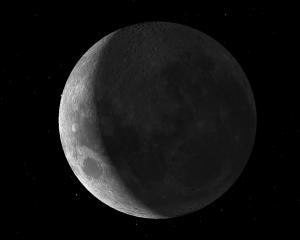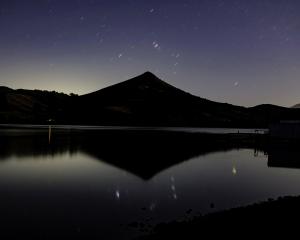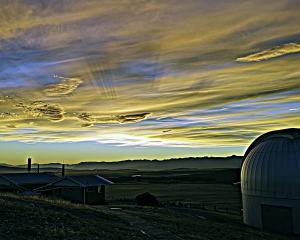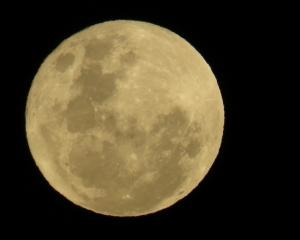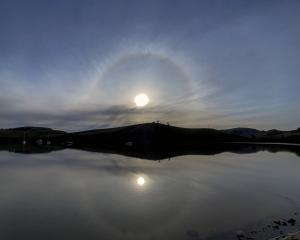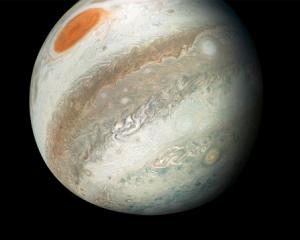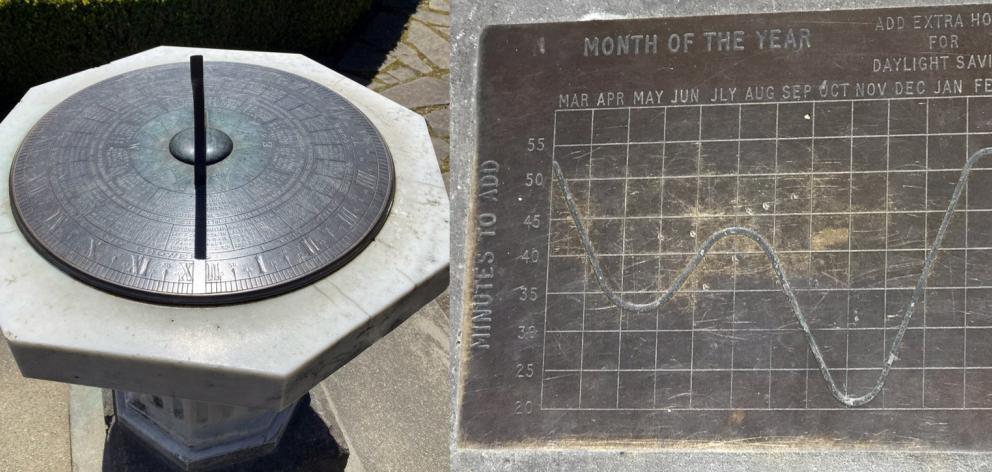
This sundial was built in 1924 by James Stewart for display in the 1925 South Seas Exhibition in Logan Park. It was relocated to its present location once the show closed.
The part of a sundial casting a shadow is called a gnomon. For accurate timekeeping, the gnomon must align with true north/south and its upper end must point towards the south celestial pole. Unfortunately, at some point in the past, the Botanic Garden sundial was incorrectly aligned with magnetic north/south. So the sundial had been telling the wrong time for many years.
Thanks to some careful work by Botanic Garden staff, the sundial has recently been correctly aligned. When the sun is out, and if you know what you are doing, it is now possible to calculate time accurately to within a few minutes.
If you want to use a sundial to tell time, there’s a little bit more to it than just reading off where the shadow crosses the numbers on the dial. That’s because sundials tell local solar time rather than New Zealand Standard Time (NZST).
To convert sundial time to the “actual” time shown by your watch, you need to correct for your longitude, for another effect caused by Earth’s varying speed as it orbits the sun called the equation of time, and, in daylight saving time, you need to add an hour.
Luckily, James Stewart knew that the complexities involved in correcting his sundial might bamboozle the average person, so he provided a simple graph on the base of the dial, showing how many minutes to add on any particular date to the time displayed by the sundial to get NZST.
With several hundred sundials to his name, Stewart was New Zealand’s most prolific sundial-maker. The best example of Stewart’s talent is the unusual cross-shaped sundial he built for his family tomb, which is in Invercargill’s Eastern Cemetery.





